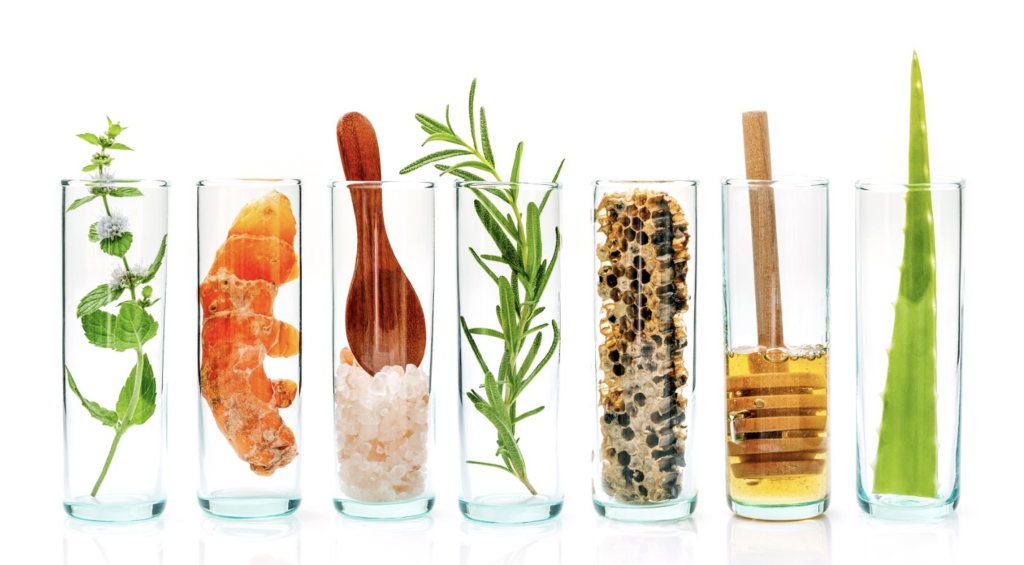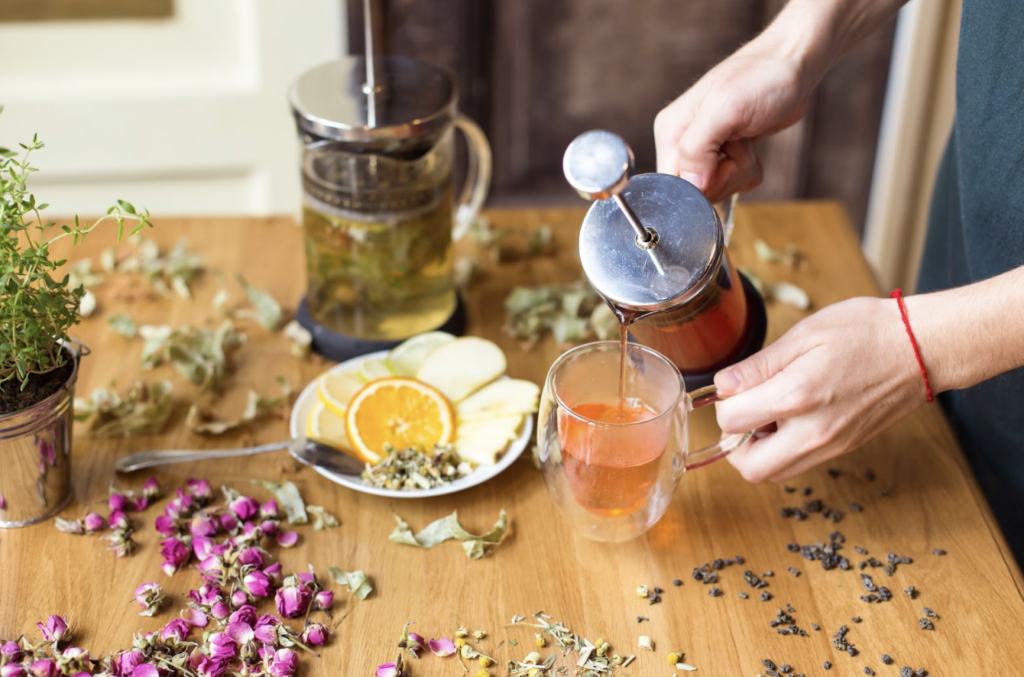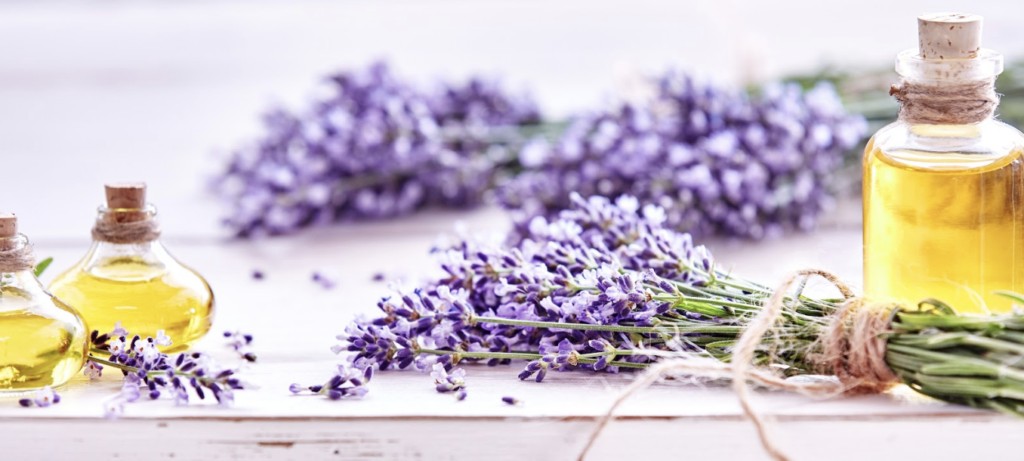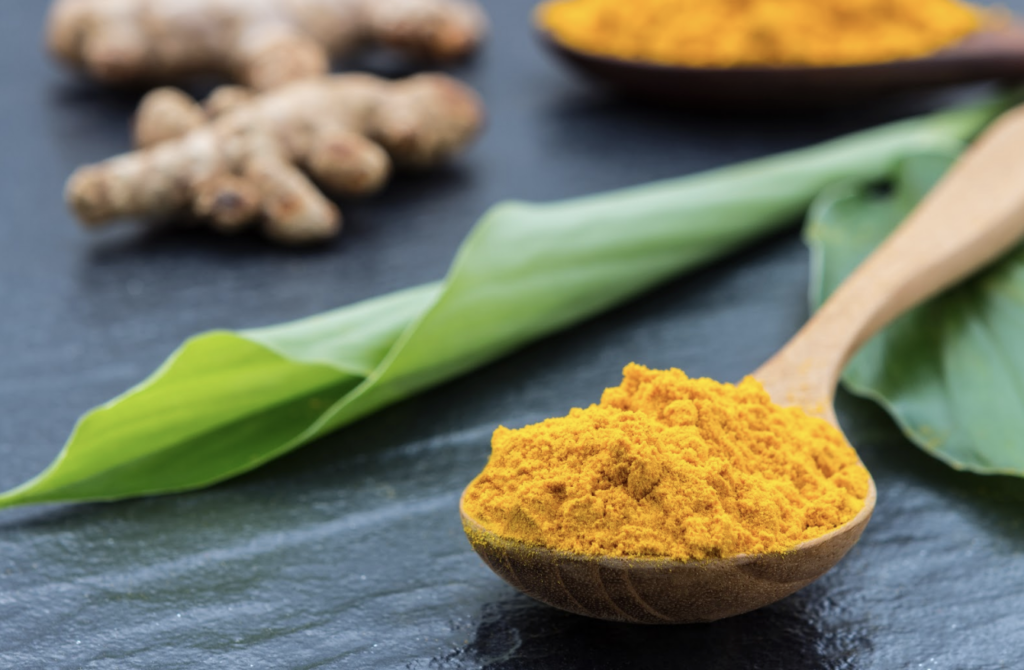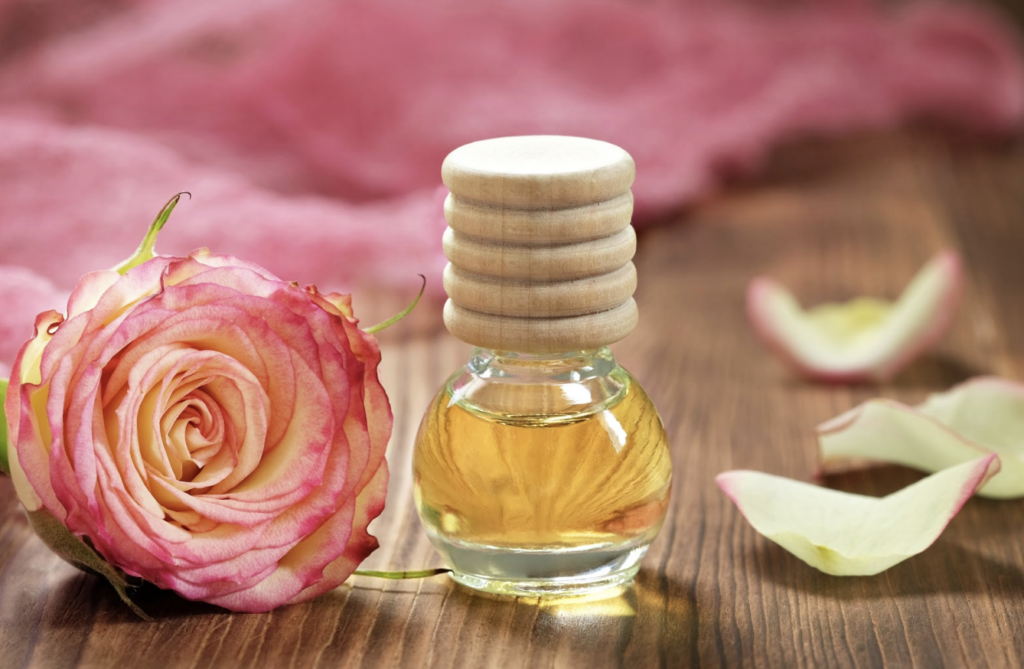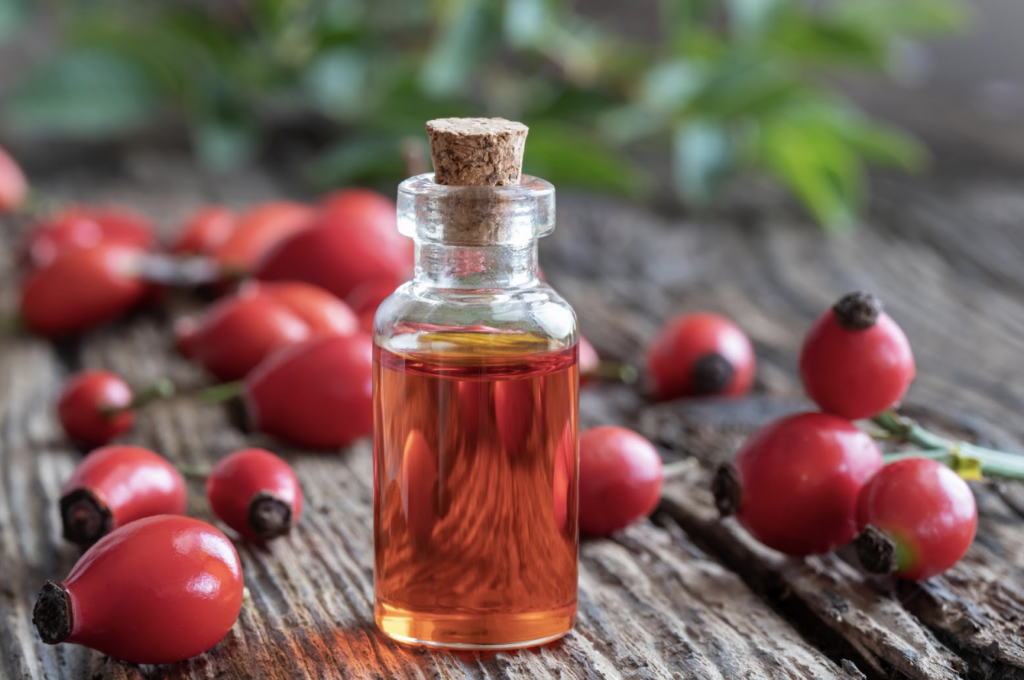Why spend extra cash or time researching skin care products when you could be using natural herbs for DIY skin care at home?
As sensitive as our skin can be, it is important to pay close attention to the ingredients in our beauty products. Just one natural ingredient can enhance beauty, provide health benefits, and improve skin quality.
From eye creams that reduce puffiness, to body scrubs for healing cracked or dry skin, there is quite an array of natural skin care products to make at home. With essential oils and various herbs at your fingertips, incorporating DIY skin care into your beauty routine doesn’t have to be difficult.
We cover the top 4 herbs for DIY skin care, and some easy at-home beauty recipes that will help you feel comfortable with what you put on your skin and avoid breaking the bank. To avoid contamination of your DIY skin care with mold, bacteria, yeast etc, just make enough for single use.
*As a note, I recommend using baking soda sparingly in any DIY recipe, because it tends to dry out sensitive skin.
Chamomile
Have you ever had a cup of chamomile tea to calm your nerves or to rest before bed? Chamomile, an herb comparable to daisy-like plants, is commonly known for its relaxing properties and is excellent for DIY skin care.
Dried chamomile flowers have been used for centuries to accelerate the healing process and treat wounds, gout, bruises, skin irritations, and more. Their high levels of antioxidants and anti-inflammatory properties help to soothe redness and reduce inflammation.Though Chamomile is an herbal medicine of the past, it continues to be used to treat skin issues such as eczema, sunburn, and mild rashes. (1)
If you suffer from acne that leaves scars on your skin, applying chamomile can help to reduce scarring. You can do this with a compress of dried chamomile and warm water, or applying tea directly to achieve glowing, healthy skin.
Chamomile has the ability to penetrate deep layers of the skin and reduce inflammation. A study from the Journal of Clinical and Aesthetic Dermatology states that chamomile includes a terpenoid called levomenol with anti-inflammatory and natural moisturizing agents that have been found to diminish signs of photodamage and improve skin texture. (2)
Essential oil extracts from chamomile are often used in natural beauty cosmetics and DIY skin care home remedies. Mixing chamomile oil or the dried herb with lotion can help to reduce breakouts or improve dry, irritated, or acne-prone skin. This calming chamomile lotion recipe is great for every-day use and includes aloe vera juice, organic shea butter, and almond oil.
Additionally, as stress can be tough on the skin, soaking in a chamomile bath can help to rid yourself of a rash and leave your skin feeling soft and rejuvenated.
Lavender
Like chamomile, lavender is popular for its soothing effects. While lavender can help to calm your mind, it also works wonders for your skin.
Lavender is native to the mediterranean and the Middle East. It is recognized by its purple and blue flowers and its calming, clean scent. Like many herbs, lavender was used by ancient doctors and herbalists for traditional medicine. Lavender helps to create calm moods, induce sleep, and relieve pain. (3)
As an anti-viral, lavender assists in healing wounds and promoting anti-aging, by encouraging scar tissue to form, keeping your skin firm and healthy. In most cases, painful inflammation can be treated with lavender. Applying lavender oil topically can help to soothe the inflammation, and numb the pain of burns or other wounds. (4, 5)
Some everyday ailments that lavender can help you with are: bee stings or insect bites, minor burns, cuts, canker sores, and even eczema. A drop or two of lavender essential oil can reduce itching and swelling, stop a cut from bleeding, and kill bacteria. To treat the inflammation on a burn, you can combine one to three drops of lavender oil with coconut oil.
While lavender has a history in wound healing, plant essential oils have the potential to be irritants. Lavender oil has anti-inflammatory properties, but to a susceptible individual, depending on skin type, it can cause an allergic reaction. To avoid this, be sure to dilute the essential oil with a carrier, like coconut, olive oil, tea tree oil, or avocado oil. (6)
There are several DIY skin care options out there, including lavender infused insect repellant, bath salts to relax muscles and reduce skin irritation, and sugar scrubs to loosen any dead skin.
This DIY lip balm is made with saffron and lavender oils, and is both soothing and fragrant.
Turmeric
Turmeric is a plant from Asia typically used in foods, but as a versatile herb, it has several medicinal uses as well. Turmeric has been used for thousands of years and is a staple of traditional Chinese medicine. First used as a dye, it is famous for its deep orange-yellow color. The root is typically ground into a powder, with a strong earthy taste and aroma.
Turmeric is yet another herb with inflammatory properties. It turns out that this herb works well with all skin types, from dry to oily skin, and especially for those with psoriasis. The anti-inflammatory in turmeric helps to rid the skin of any redness, puffiness, or scarring. (7)
Other benefits of turmeric include treatment of bacteria in the skin, as well as reduced hyperpigmentation or dark spots. While more research is necessary, it is clear that turmeric is a beneficial antioxidant, and there is a large range of conditions that it can treat. In addition to homemade skin care, turmeric is full of vitamin E, B vitamins and ascorbic acid, and Vitamin C. (8)
Due to its bright color, turmeric can easily stain the skin, however the yellow-orange color can be removed simply with soap and warm water. When used in moderation, turmeric will likely not stain your skin, and will leave it radiant and fresh.
For a DIY skin care routine, turmeric is often used in face wash and face masks. When used consistently, a turmeric mask can brighten skin and treat acne. Sometimes, egg yolk and turmeric are mixed together in face creams for added hydration and glowing skin. This soap recipe features both green tea and turmeric which may lighten and exfoliate the skin.
Rose
Another popular ingredient in the world of natural skin care is rose; and yes, we are referring to your favorite sweet-smelling flower.
Rose shows up in DIY skin care recipes as rose water, rose essential oil, and rosehip seed oil.
Rose oil is extracted from the petals of roses through steam distillation. Rose oil has antimicrobial and aromatherapy benefits to calm skin and treat acne. (9)
Rosewater is made from water and rose petals, and its use dates back as far as the 7th century. Rosewater, often found in facial toners, is also anti-inflammatory, so it soothes the skin, and its antioxidants protect and balance skin cells.
Rosehip seed oil is different from rose essential oil. It is made from the small fruits located behind the rose flower. Rosehip’s oils and proteins keep the skin moisturized and treat visible signs of aging.
For DIY beauty, you can make rosewater by simmering rose petals, either dried or fresh, in water. Rose water will help to fight skin dullness and reduce stress. The scent of rose has mood-boosting effects, promoting a more relaxed state.
Other DIY home remedies include rose oil facial wash and cream, and rosehip moisturizer. Rosewater pairs nicely with apple cider vinegar in this homemade facial toner that refreshes vibrancy in the skin.
In Summary
- DIY is in and it’s easy. Don’t hesitate to start making your own skin care products, as natural ingredients have several benefits for your skin.
- The anti-inflammatory properties in chamomile reduces redness and heals wounds. Chamomile lotion calms and moisturizes the skin.
- Lavender is an antiviral, assisting in anti-aging, firming skin, and preventing infection.
- Turmeric is versatile, reducing hyperpigmentation and dry skin. There is truth behind the latest trend of turmeric face masks.
- Homemade rose products, such as toners, help your skin to remain balanced and free of acne.
Sources
- Srivastava, J. K., Shankar, E., & Gupta, S. (2010). Chamomile: A herbal medicine of the past with a bright future. Molecular medicine reports, 3(6), 895-901. Full Text: https://www.ncbi.nlm.nih.gov/pmc/articles/PMC2995283/
- Stallings, A. F., & Lupo, M. P. (2009). Practical uses of botanicals in skin care. The Journal of clinical and aesthetic dermatology, 2(1), 36. Full Text: https://www.ncbi.nlm.nih.gov/pmc/articles/PMC2958188/
- Koulivand, P. H., Khaleghi Ghadiri, M., & Gorji, A. (2013). Lavender and the nervous system. Evidence-Based Complementary and Alternative Medicine, 2013. Full Text: https://www.ncbi.nlm.nih.gov/pmc/articles/PMC3612440/
- Koca Kutlu, A., Çeçen, D., Gürgen, S. G., Sayın, O., & Çetin, F. (2013). A comparison study of growth factor expression following treatment with transcutaneous electrical nerve stimulation, saline solution, povidone-iodine, and lavender oil in wounds healing. Evidence-Based Complementary and Alternative Medicine, 2013. Full Text: https://www.hindawi.com/journals/ecam/2013/361832/
- Mori, H. M., Kawanami, H., Kawahata, H., & Aoki, M. (2016). Wound healing potential of lavender oil by acceleration of granulation and wound contraction through induction of TGF-β in a rat model. BMC complementary and alternative medicine, 16(1), 144. Full Text: https://www.ncbi.nlm.nih.gov/pmc/articles/PMC4880962/
- Prashar, A., Locke, I. C., & Evans, C. S. (2004). Cytotoxicity of lavender oil and its major components to human skin cells. Cell Proliferation, 37(3), 221-229. Full Text: https://onlinelibrary.wiley.com/doi/full/10.1111/j.1365-2184.2004.00307.x
- White, B., & Judkins, D. Z. (2011). Does turmeric relieve inflammatory conditions?. Clinical Inquiries, 2011 (MU). Abstract: https://www.ncbi.nlm.nih.gov/pubmed/21369559
- Prasad, S., & Aggarwal, B. B. (2011). Turmeric, the golden spice: from traditional medicine to modern medicine. In Herbal Medicine (pp. 273-298). CRC Press. Full Text: https://www.ncbi.nlm.nih.gov/books/NBK92752/
- Thring, T. S., Hili, P., & Naughton, D. P. (2011). Antioxidant and potential anti-inflammatory activity of extracts and formulations of white tea, rose, and witch hazel on primary human dermal fibroblast cells. Journal of Inflammation, 8(1), 27. Full Text: https://journal-inflammation.biomedcentral.com/articles/10.1186/1476-9255-8-27

